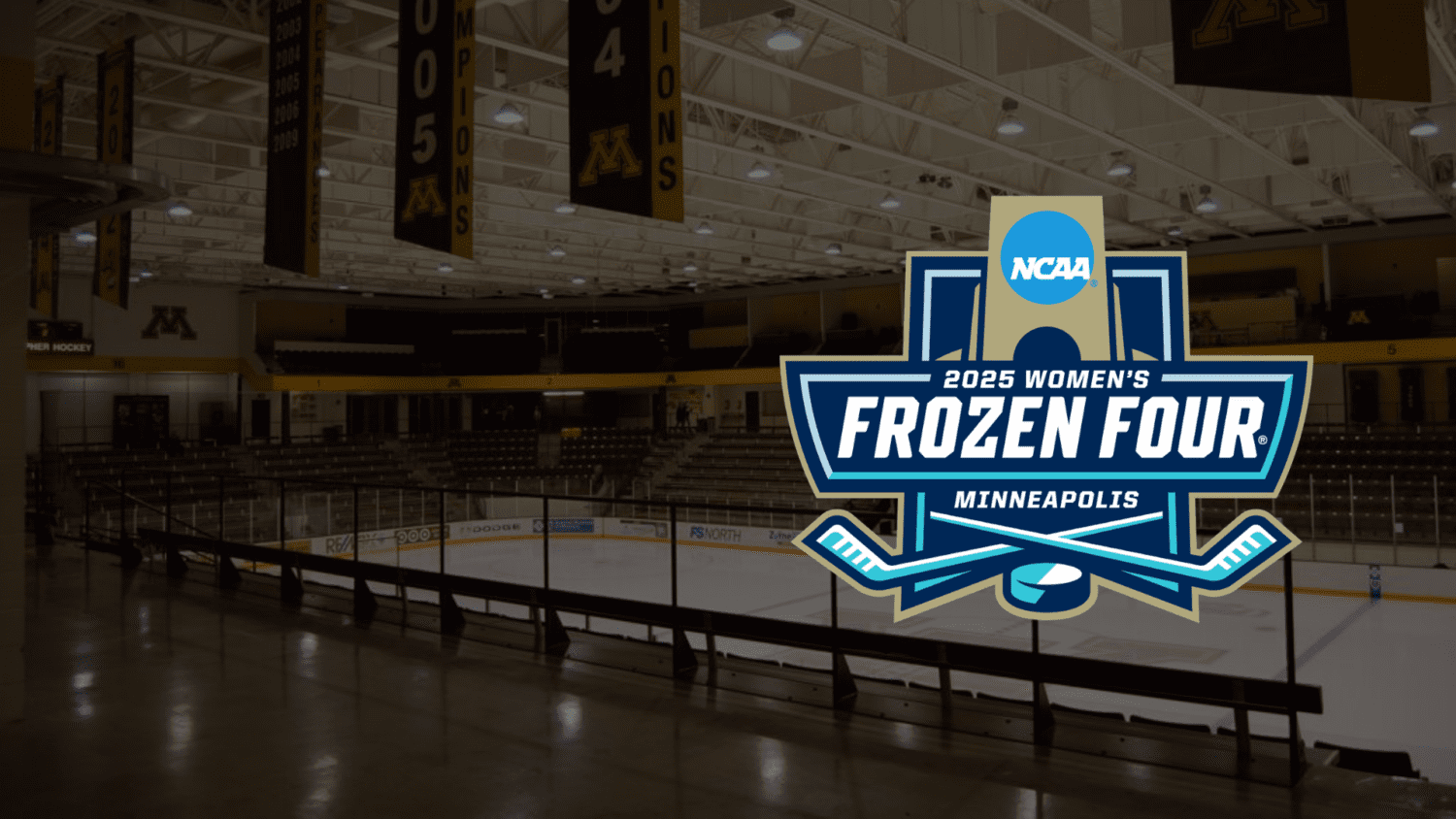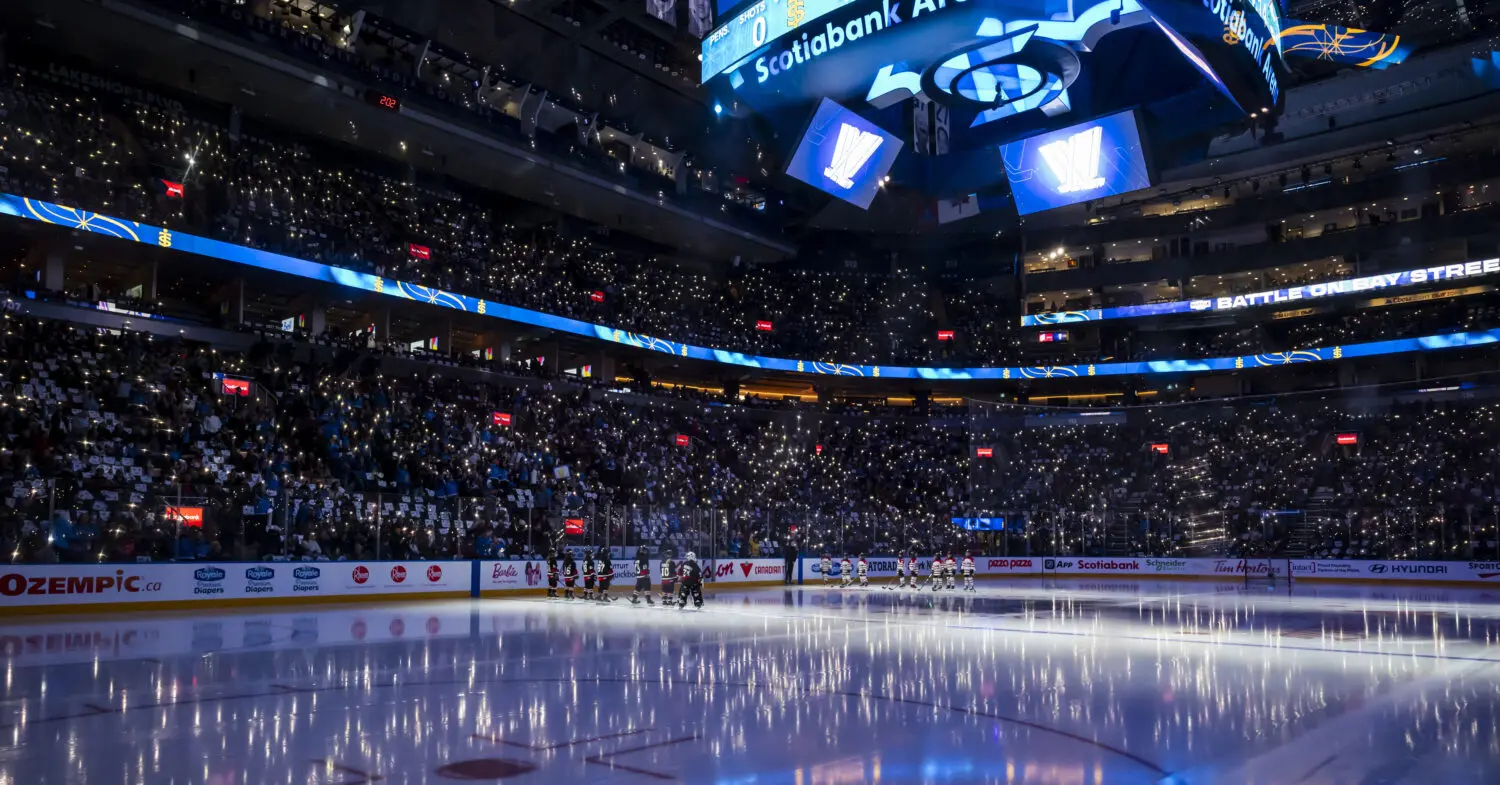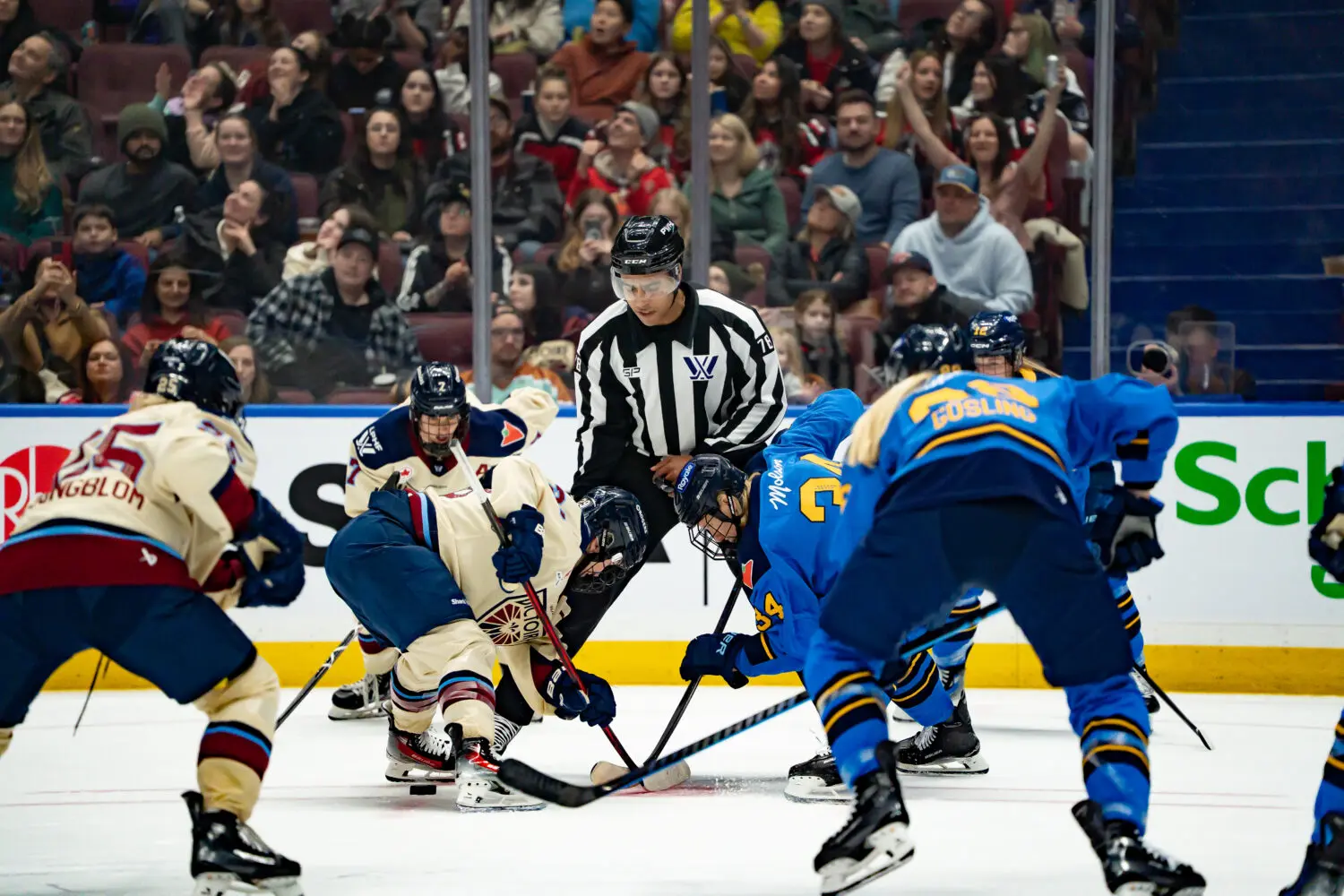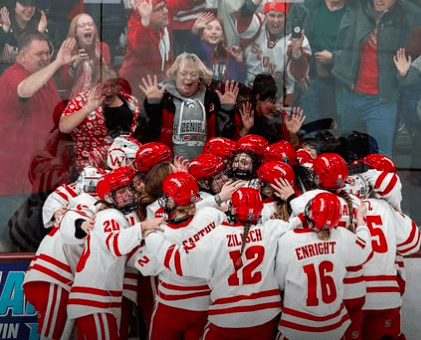Enjoying an incredible run in ice hockey as player and later coach, the incomparable legacy of Sarah Ahlquist-Schneider features another unique distinction. Celebrated as one of the pioneers for Bandy in the United States, the pride of South St. Paul, Minnesota, has also enjoyed the privilege of serving as captain of the national team.
Among a highly impressive list of achievements, the previous decade saw Ahlquist-Schneider participate in four Bandy World Championships (2012, 2014, 2016, & 2018). Of all these events, none held as much emotion as the 2016 edition. Contested in Roseville, Minnesota at the Guidant John Rose Memorial Oval, believed to be North America’s largest artificial outdoor skating rink. Representing a sense of national pride for USA Bandy, a significant highlight included a 9-0 win versus China to open the tournament. Bestowed the honor of the tournament’s Most Outstanding Goaltender, Ahlquist-Schneider took her place among the game’s elites.
Ahlquist-Schneider’s origins in bandy hold a linkage to another outstanding goaltender from the State of Hockey. Lauren Gieselman first made her mark playing with boys in the Annandale-Maple Lake Youth Hockey Association. Part of a long list of notable players who honed their skills at the iconic Shattuck-St. Mary’s, she excelled at the NCAA level for the St. Cloud State Huskies. Until 2022, Gieselman held the Huskies program record for career saves, since surpassed by Emma Polusny.
Following hockey, Gieselman donned the Stars and Stripes for USA Bandy, bringing her solid skill set in a pioneering role. With 2012 representing her swan song in the sport, the prospect of possibly passing the torch to a distinguished rival and respected friend held intrigue. As Ahlquist-Schneider was in competition with two other goaltenders for the backup role on the national bandy team, the final result was a cherished opportunity to be teammates
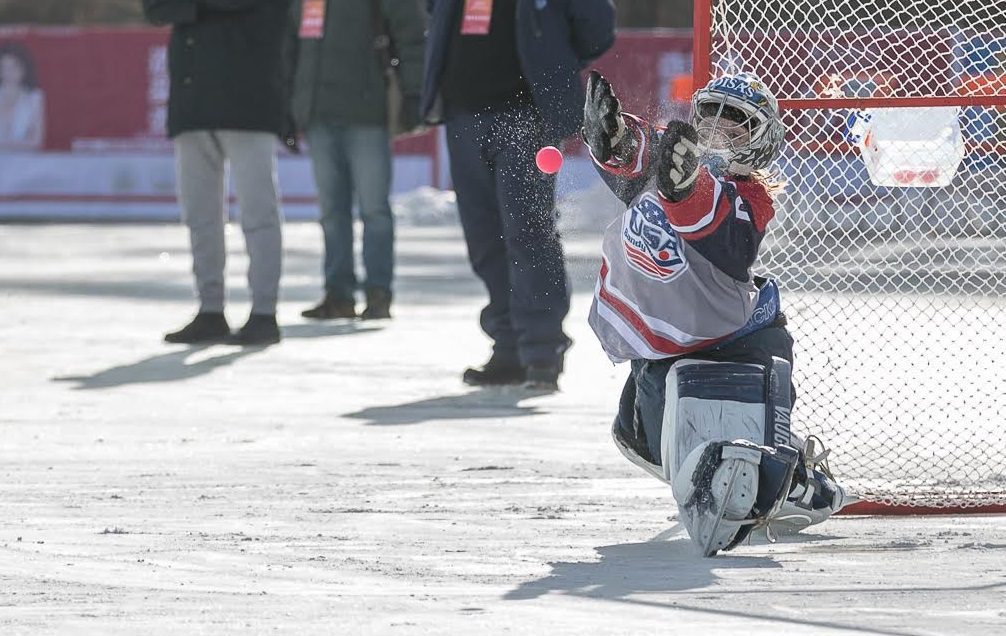
“I was recruited by a friend and fellow goalie, Laura (Gieselman) Evanson, back in 2011. She and I had played hockey, with and against each other, in high school and college. Laura had been playing bandy for the past few years and was ready to move on from the sport, so she sought me out as a replacement. She reached out to me and was basically like, ‘Do you want to play a sport called “bandy” – it is like hockey and soccer put together. You may have an opportunity to play for Team USA and go to Russia.’ I was like, ‘Sure! Sign me up!’
Afterwards, I went to the Guidant John Rose OVAL, the rink in Roseville, MN, the only bandy rink in all of North America, to watch a game and meet the coaching staff. They gave me a schedule and told me to start coming to games. I was given an informal tryout and I ended up earning one of the two goalie spots. In February 2012, I was on my way across the globe!
One of the things that really helped in that first year was that I had an amazing goalie coach, Thom Wynn, who gave me a crash course in how to play the game. (When I first started, he literally stood behind my net during games and told me what to do!)”
Following the heartbreaking news that a World Championship would not be held in 2024, the introduction of a 4-Nations Cup served as an essential substitution on the Bandy calendar. Through the admirable efforts of Sweden’s Lars Wennerholm, his tireless efforts were crucial in providing a world-class tournament featuring a quartet of exceptional programs. Of note, the US national team graciously provided him the terrific gesture of a personalized jersey in their popular powder blue color.
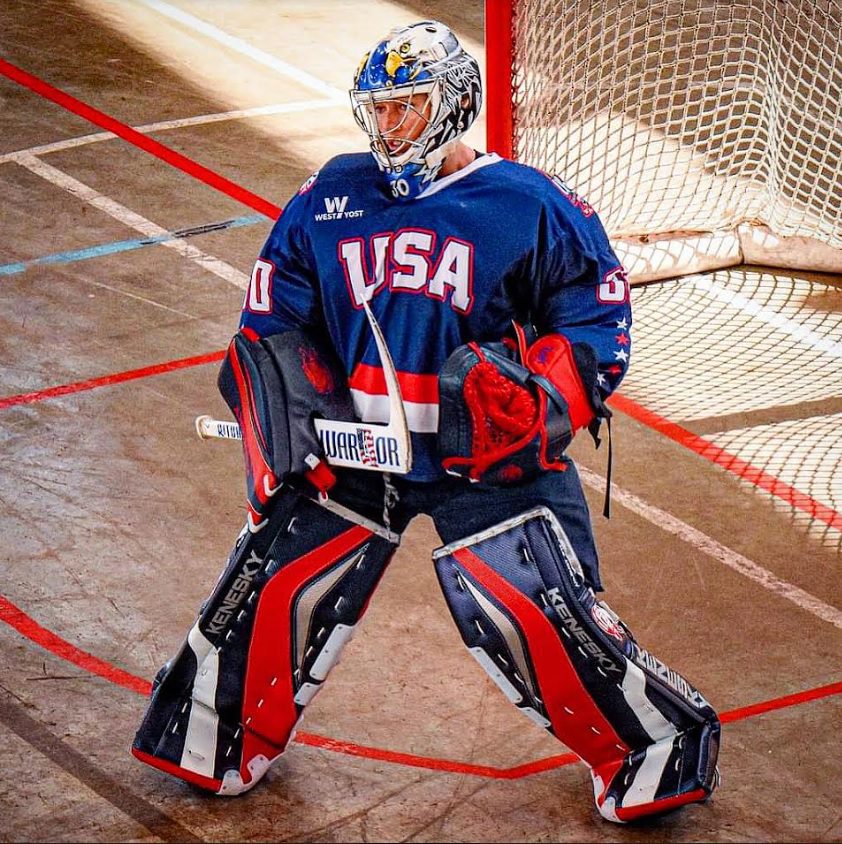
Emerging with a third-place finish, the valiant American roster made a significant statement in their game versus Sweden. Currently, the Swedes stand as bandy’s most dominant team, enjoying status as the five-time defending world champions. Facing off Sweden in their final game of the 4-Nations Cup, the US grabbed the lead twice, enjoying a 1-0 and 2-1 advantage. Although Sweden regrouped, emerging victorious, the gutsy performance provides the US with the optimism of a podium finish at the next World Championships.
“The 4-Nations Cup was a wonderful opportunity for the best female bandy teams in the world to be able to compete in a year that an official World Championship was unable to be organized, and Team USA took a big step forward as we had what was easily our best international showing since 2016. The USWNT made a strong statement that we have gotten significantly better, as we took third place in the tournament.
We played four games: an exhibition match against Sweden’s U21 team, followed by official matches against Finland, Norway, and Sweden. For the first time in an international tournament, we scored in every single game. That was a huge accomplishment. Included in that statistic is that we scored on Sweden – TWICE. Plus, we were actually tied with them, 2-2 at halftime of our match. Though we ultimately lost the game, this feat cannot be understated. Until this game, the USWNT had only scored on the Swedes ONE time, (in 2016) in the entire history of our games against each other. And we typically get blown out in games against them. It was a really exciting game to be a part of and I think it sent a strong message to the international bandy community that the Americans have turned a corner.”
Among the matches contested, the most inspiring for Ahlquist-Schneider and her American teammates took place on March 21. Facing off versus Finland, a highly emotional 4-3 win assured more than a third-place finish. Instilling confidence to a program on the rise, besting the Finns signified their first triumph against an A Pool opponent in eight years, dating back to February 21, 2016.
With Finland boasting seven consecutive wins afterwards, although four wins were decided in a shootout, the scales were now tipped in the Americans favor. A trio of goals allowed for a 3-1 advantage at halftime. Highlighted by Erin Babineau enjoying her first international goal, followed by Kalli Funk capitalizing on a penalty shot opportunity. Afterwards, Allie Thunstrom, a former Isobel Cup champion and competitive speed skater, netted the third goal.
Despite the Finns trimming the lead, veteran star Katie Noonan provided the US with a 4-2 advantage, inspiring teammates and supporters alike. Although Noonan’s goal proved to be the game-winning tally, that feeling of inspiration proved important at a critical juncture. Finland also scored on a penalty shot in this match, trimming the American lead with five minutes remaining. Displaying great poise, Ahlquist-Schneider prevented Finland from tying the score, as an all-around effort erasing eight years of frustration, replaced by celebration.
“The Sweden game was very exciting, but the best moment of the 4-Nations Cup was definitely our game against Finland. We won, 4-3, and the game was SUPER intense. It also was a hugely significant victory because it was the first time that the USWNT had defeated an A-pool opponent since the 2016 World Championship, (back when we defeated Finland, to secure 5th place in that tourney).
I think most significantly, this victory allowed our team to mentally get over a huge hurdle. We had come SO close to winning against Finland several times in the years since 2016. Yet, we had lost matches in ridiculous, unfathomable ways. From own goals or hand balls in the last seconds of games, multiple battles that had gone to shootouts, hit posts on offensive opportunities to seal wins. Just stuff that you cannot even make up. We found ways to lose, over and over again.
This 2024 match against Finland was not without drama. In the final five minutes, we were up, 4-2 and Finland was awarded a penalty shot on a bizarre play. They scored to make it a one-goal game. We definitely had that “here we go again” feeling for a moment. The ensuing final minutes felt like an absolute frenzy. When that final whistle sounded, the joy – or more appropriately the RELIEF – that the veterans on the team felt was palpable in the stadium as we jumped into each other’s arms.
We had finally overcome eight years of frustration. And now that that has happened, I think the longer-tenured players have developed a newfound confidence going forward. We also have a fresh young crop of talent that has now tasted victory and is hungry for more.”
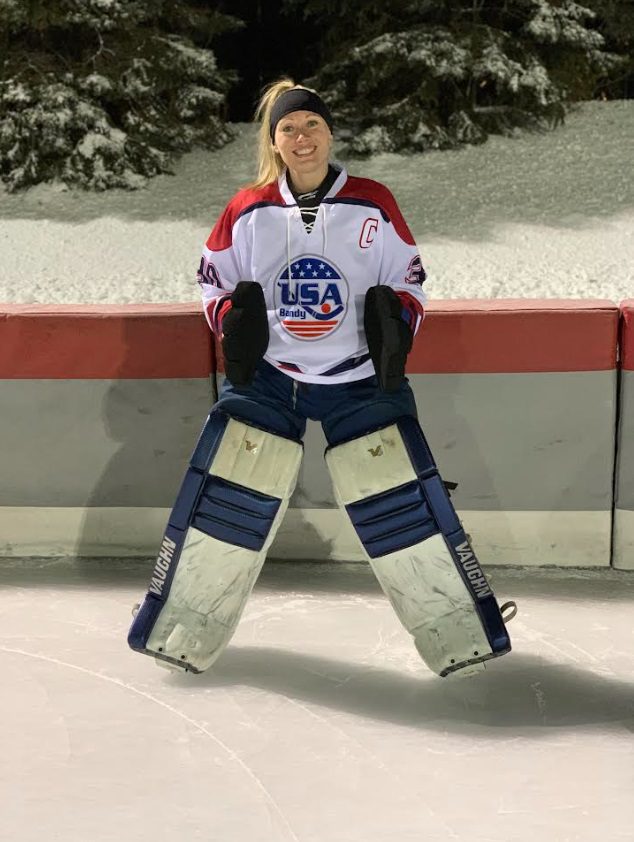
Long celebrated as the State of Hockey, Minnesota also represents the heartbeat of bandy in the United States. From the net out, many of the national team’s luminaries, including Ahlquist-Schneider, have played both ice hockey and bandy in the state. As Roseville’s OVAL now hosts a summer league consisting of numerous female teams, it marks an encouraging sign for the female game’s growth.
Currently, the presence of Ahlquist-Schneider, alongside the likes of Kalli Funk and Allie Thunstrom among others, have collectively brought world-class talent to the national team, spurring interest. Should a growing number of ice hockey players duplicate their efforts, discovering bandy as an opportunity to continue elite competition upon graduation, coupled with the prospect of international play, it could serve as the foundation for a new era.
Proud to be among the Minnesotans making their mark in bandy, the sport has yielded remarkable dividends for Ahlquist-Schneider. Finding value in many different facets, including the excitement of competition, along with an opportunity to become a pioneer, the most consistent theme remains enjoyment. Certainly, another appealing facet includes the outdoor games, blanketed under a night sky, while a fascinating display of stars and a tree-filled horizon add a feeling of tranquility.
“Since I started playing, bandy has grown significantly here in Minnesota. It is getting to the point where more and more people at least know that it exists, and a lot more people are coming out and giving it a try. The women’s game, in particular, is starting to really take off. For my first ten years playing, there was only one all-female team playing in the local men’s league. Now, this winter, we will be up to three all-female teams.
We also have a four-team women’s summer rink bandy league going right now. More and more hockey players are coming out to play. For a myriad of reasons, bandy is fun, represents a great workout, and it is a truly unique and beautiful experience playing outdoors at the tree-lined OVAL under the stars!
Moreover, it represents an opportunity to stay competitive after playing college or pro hockey and to earn a chance to play for Team USA. For me, that was a huge sell, obviously, and a way to realize a dream that I had been chasing after for my whole life.”
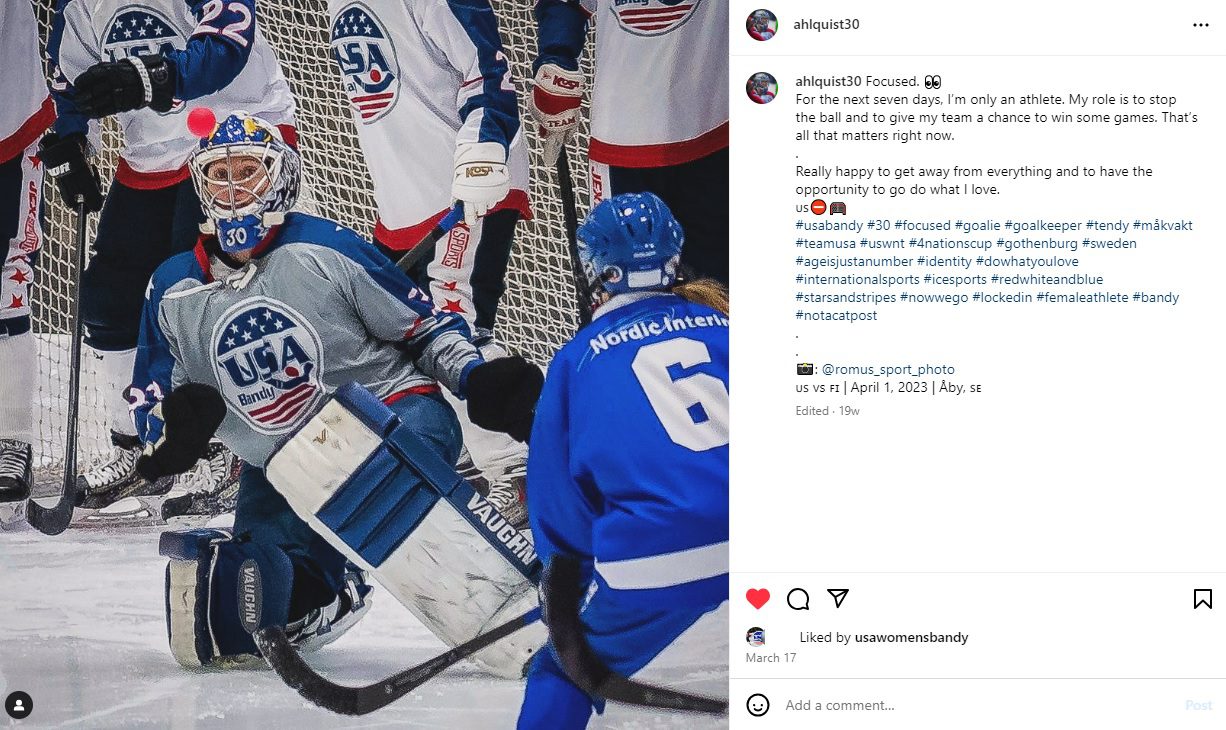
Among the key objectives for the future of bandy is the hope of inclusion as a sport in the Winter Games. Considering that Salt Lake City shall serve as host city for the 2034 Winter Games, it would certainly represent a shared victory for the national team if the sport was contested there. Should classification as an Olympic sport become a reality, an immediate benefit would be an enthusiastic increase in fans and registered players.
Certainly, the inroads made at the 4-Nations Cup serve as a stimulus for the US to build upon. With aspirations of a podium finish at next year’s World Championships in Sweden, Ahlquist-Schneider ponders a promising future with optimism. Observing the evolution of the national team first-hand, the gradual increase in the talent pool has certainly raised the bar. Recognizing a significant change in the overall team approach, confidence germinating as a desire to go from participant to perpetual contender is highly coveted.
“Speaking of growth, the National Team is finally becoming a “true” national team, where there is legitimate competition for roster spots. In the not-so-distant past, we were desperate to find players. (In the 2018 World Championship, in China, our team manager famously had to suit up because we were short skaters.) Now we have got a pretty big pool of talent that will be competing to earn a spot on the team that will travel to Sweden to represent the US in the 2025 World Championship.
With that has come a mindset shift at the top; players now are more focused on competing and winning. Being on the USA bandy team used to be thought of by many as a fun “hobby” to do with friends, (and it absolutely still is at the recreational level!) but now the national team has become much more competitive – and that really was exemplified by the results this past March in Sweden.
Another encouraging thing is that bandy seems to be getting much more organized at the top. The Federation of International Bandy (FIB) has taken steps recently to really start growing the game and pushing for inclusion in future Winter Olympic Games. Bandy is the second most popular winter sport in the world, based upon participation numbers, and it absolutely belongs in the Olympics.
There has always been a rally cry for this inclusion by several people, (including USWNT head coach, Chris Middlebrook, who had a tremendous career as a player on the USMNT). but now it seems like we might actually be making progress there. I would not be surprised to see bandy included by 2034. Unfortunately, my USWNT playing days will surely be over by then, but I’d love to stay involved with the sport through coaching or other avenues. It has become a huge part of my life.”
“All quotes obtained first hand unless otherwise indicated”
Images supplied by Sarah Ahlquist-Schneider
[adrotate group=”1″]
Related Articles
Categories
Recent Posts
[adrotate group=”2″]

